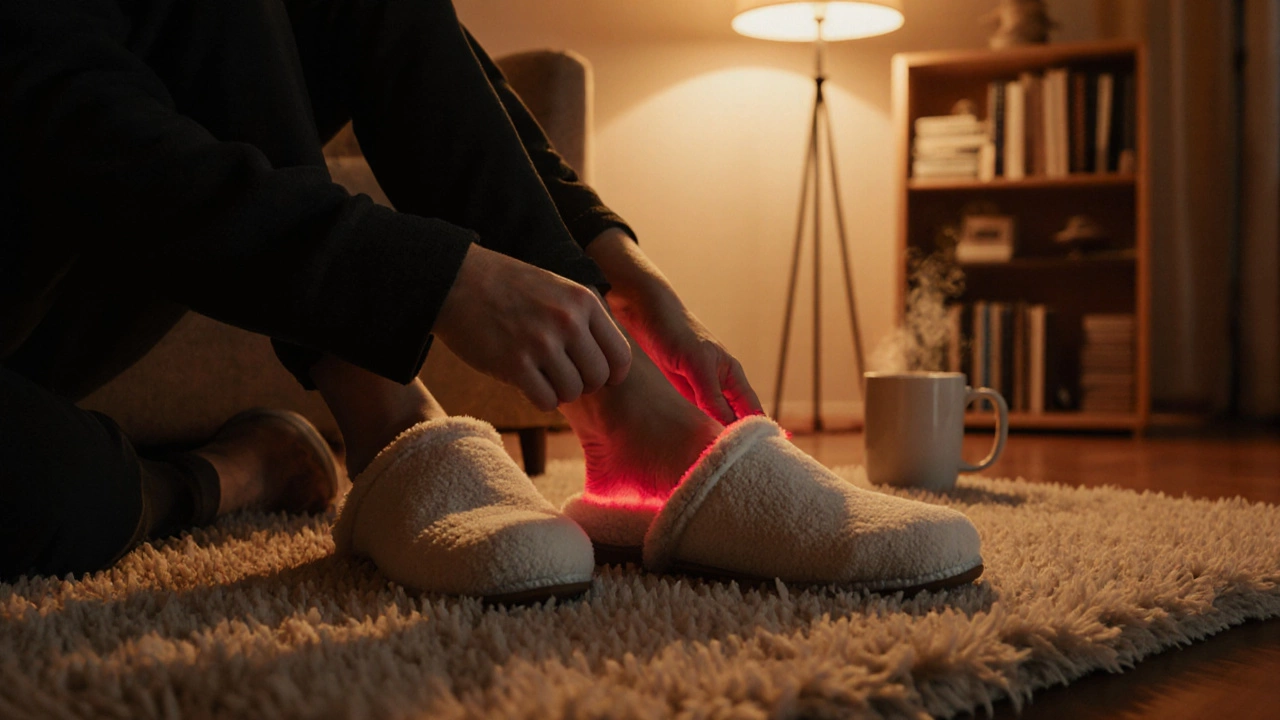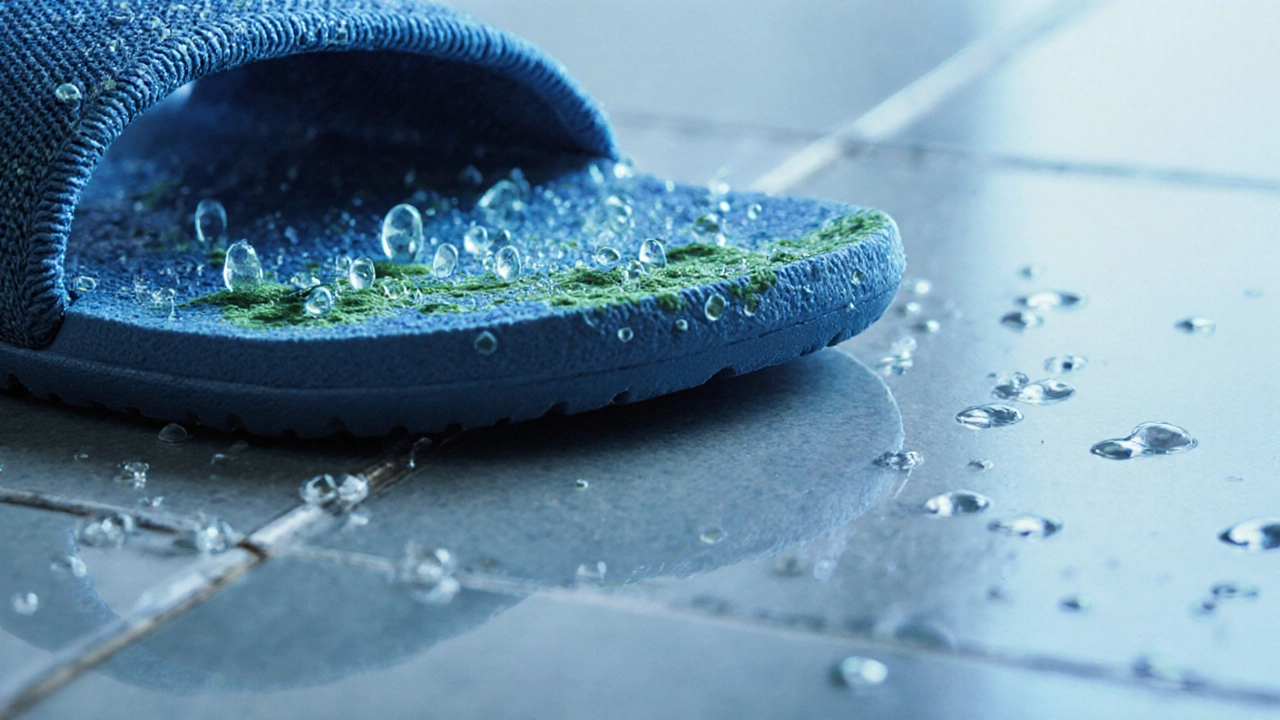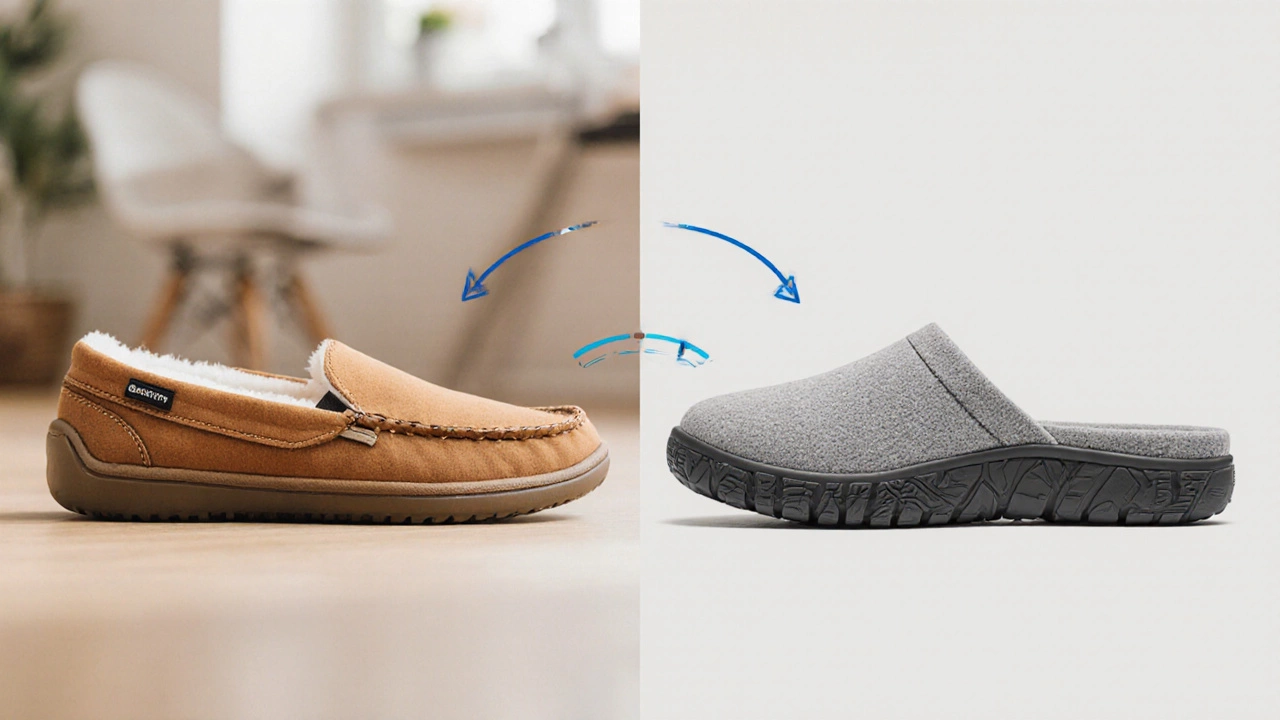Slippers Cons: Hidden Drawbacks You Should Know

Slippers Cost Calculator
Calculate Your Long-Term Slipper Costs
See how material quality affects your budget over time. The article reveals that cheap slippers often cost more long-term due to frequent replacements.
Ever wonder why a pair of cozy Slippers might feel good at first but end up causing more trouble than you expect? The truth is that while they’re great for warming up your toes, they also come with a set of downsides that most shoppers overlook. Below we break down the most common pitfalls, explain why they matter for your Foot healththe overall condition of your feet, including comfort, support, and injury prevention, and give you practical tips to avoid them.
1. Lack of Structural Support
Most slippers are designed for short‑term indoor wear, not for walking long distances or standing for hours. The soft soles and flexible uppers provide almost no arch support, which means the foot’s natural alignment is left to the weakest point: the outsole. Over time, this can lead to plantar fasciitis, heel spurs, or general foot fatigue. If you’ve ever felt a sharp sting after a day in flimsy slippers, that’s your foot’s way of saying it needs more structure.
2. Hygiene Nightmares
Because slippers are easy to slip on and off, they often collect dirt, sweat, and bacteria from multiple surfaces. When the interior fabric stays damp-especially in humid Melbourne summers-microbes multiply quickly. This can cause unpleasant odors, athlete’s foot, or even fungal infections. A quick Google search of "slipper hygiene" returns dozens of forum posts warning about mold growth on indoor footwear.
3. Problematic Materials
Cheap synthetic fabrics and low‑grade foams may feel plush, but they tend to break down faster than natural fibers. They can release volatile organic compounds (VOCs) that irritate sensitive skin, and they rarely breathe, trapping heat and moisture. On the other hand, high‑quality wool or cotton versions are more breathable but often come at a higher price point. The choice of Footwear materialsthe fabrics, leathers, foams, and textiles used to construct shoes and slippers therefore directly impacts comfort, durability, and health.
4. Slip‑and‑Fall Risk
Even the best‑looking slippers can be dangerous on smooth floors. The thin soles lack deep tread patterns, so they don’t grip tile, hardwood, or polished stone effectively. A sudden pivot or a small spill can turn a harmless stroll into a painful tumble. According to the Australian Bureau of Statistics, household falls account for 30% of all falls among adults over 65, and slippery indoor footwear is a leading contributor.

5. Posture and Alignment Issues
When your feet aren’t properly supported, the ripple effect travels up your legs, hips, and lower back. Poor footwear forces the knees to rotate slightly inward, which can aggravate knee pain and misalign the spine. Over months, this misalignment may manifest as chronic lower‑back tension, especially for people who work from home and never change out of their slippers.
6. Seasonal Limitations
Slippers excel in cooler months, but they become a liability when temperatures rise. The insulated liners trap heat, making your feet sweat excessively in summer. This creates a perfect breeding ground for Mold growththe development of fungal spores on damp surfaces, which thrives in warm, moist environments. Switching to breathable sandals or regular shoes during hot spells can prevent the uncomfortable, sticky feeling you’ve all experienced.
7. Short‑Lived Value
Because many slippers are built for comfort rather than durability, they tend to wear out quickly. The sole compresses, the lining puffs, and the stitching frays after a few months of regular use. When you factor in the cost of replacing them frequently, the initial bargain price often doesn’t save you money in the long run.

Quick Checklist of Slipper Cons
- No arch or heel support → risk of plantar fasciitis.
- Easy to pick up dirt → potential fungal infections.
- Low‑quality synthetic materials → skin irritation and odor.
- Thin, smooth soles → higher slip‑and‑fall probability.
- Poor alignment → back and knee discomfort.
- Insulation that traps heat → mold and sweat buildup.
- Limited lifespan → recurring purchase cost.
Comparison Table: Common Cons vs. Mitigation Strategies
| Con | Why It Matters | How to Mitigate |
|---|---|---|
| Insufficient support | Increases foot fatigue and injury risk | Choose slippers with built‑in arch inserts or wear orthotic insoles |
| Hygiene concerns | Can lead to athlete’s foot or fungal infections | Wash removable liners weekly; air‑dry after use |
| Slippery soles | Higher chance of falls on smooth floors | Opt for rubber‑coated soles with deep tread patterns |
| Heat retention | Promotes mold growth and sweaty feet | Swap to breathable fabrics in summer; use moisture‑wicking socks |
| Short durability | Frequent replacements increase cost | Invest in higher‑grade leather or double‑stitched models |
How to Choose Safer Slippers
When you’re on the hunt for a new pair, keep these three rules in mind:
- Support first: Look for a built‑in footbed that mimics the shape of the arch.
- Material matters: Natural fibers like cotton, wool, or genuine leather breathe better than cheap polyester.
- Grip is non‑negotiable: A rubber outsole with a patterned tread reduces slip hazards dramatically.
Following this short checklist lets you enjoy the cozy feel of slippers without paying the hidden price.
Frequently Asked Questions
Can I wear slippers outdoors?
Most slippers aren’t built for outdoor terrain. The soles lack the durability and tread needed for pavement, gravel, or wet surfaces. If you need a shoe for quick trips outside, choose a pair labeled “indoor‑outdoor” or switch to a casual sneaker.
How often should I clean my slippers?
Aim to wash removable liners at least once a week. For machine‑safe slippers, a gentle cycle in cold water works. Air‑dry them completely before the next wear to prevent mold.
Do orthotic insoles help with slipper problems?
Yes. Adding a thin, contoured orthotic can supply the missing arch support and reduce strain on the heel and forefoot, turning a flimsy pair into a more ergonomic option.
What material is safest for people with sensitive skin?
Natural fibers like organic cotton, bamboo, or merino wool are hypoallergenic and breathable. Avoid synthetic linings that contain latex or formaldehyde‑based adhesives.
Is it true that slippers can cause back pain?
When your feet lack support, the entire kinetic chain compensates, which can strain the lower back. Consistently wearing poorly supportive slippers may contribute to chronic back discomfort.
Understanding the slippers cons helps you make smarter choices and keep your feet happy. Whether you stick with classic fleece slides for couch‑watching or upgrade to a supportive, breathable pair for daily wear, the key is to weigh comfort against the hidden risks outlined above.
- Oct, 16 2025
- Violet Greenfield
- 0
- Permalink
Written by Violet Greenfield
View all posts by: Violet Greenfield